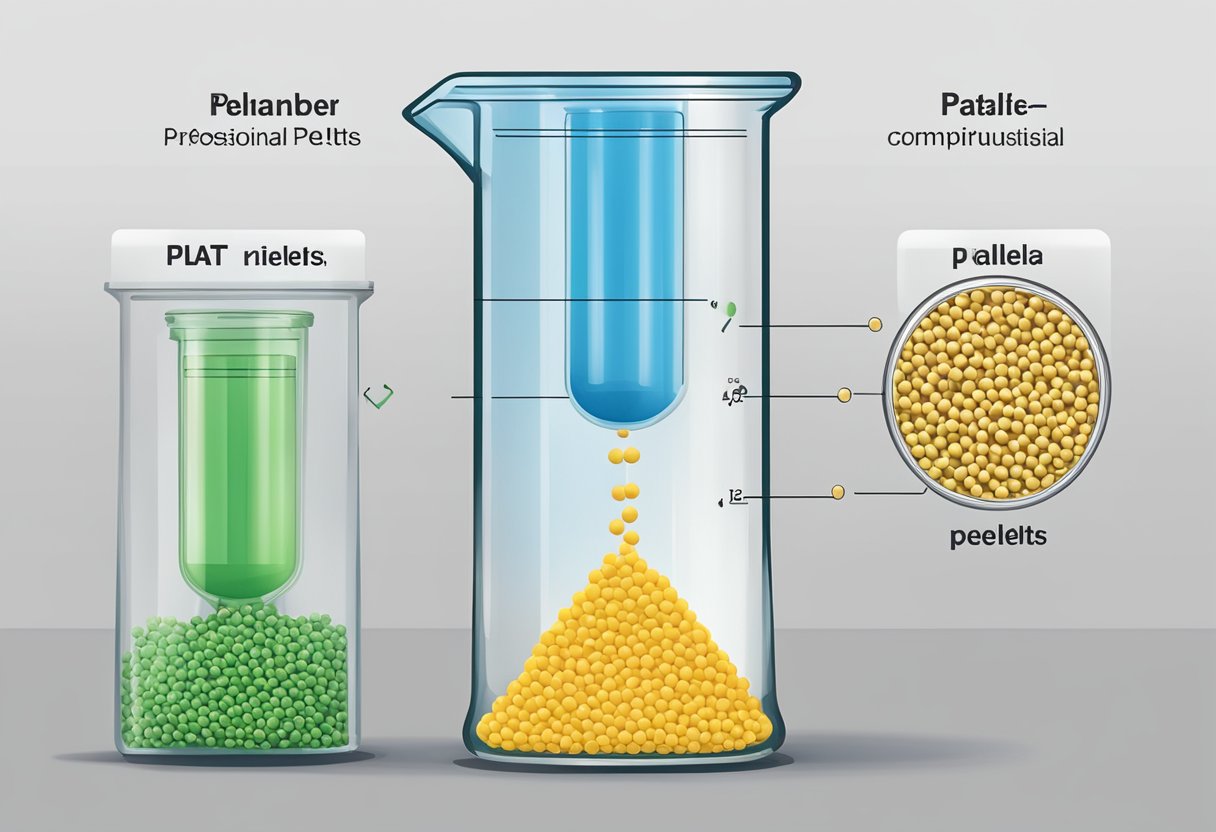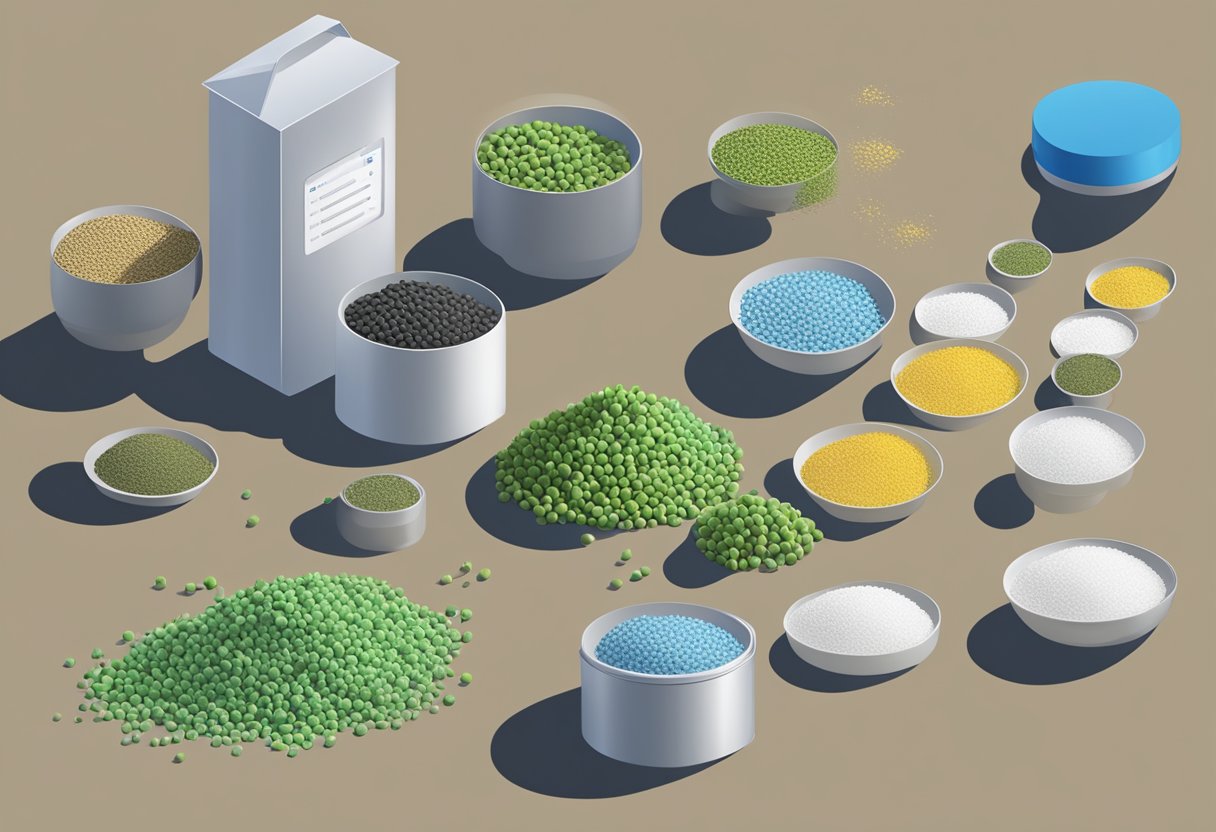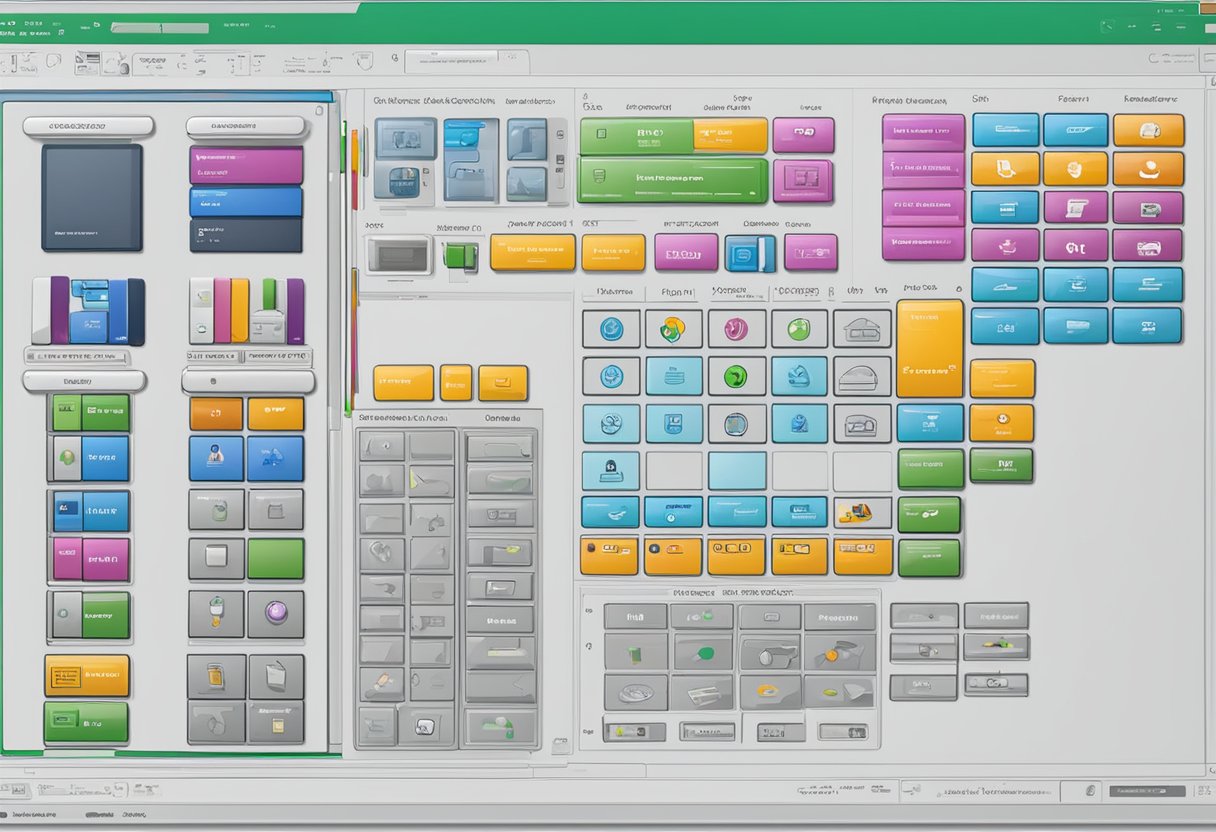PBAT and PLA: Understanding the Differences and Benefits
19/01/2024
PBAT and PLA are two types of biodegradable plastics that are becoming increasingly popular as an alternative to traditional petroleum-based plastics. PBAT, or polybutylene adipate terephthalate, is a biodegradable copolymer made from adipic acid, terephthalic acid, and butanediol. PLA, or polylactic acid, is a biodegradable polymer made from renewable resources such as corn starch or sugarcane.

One of the main advantages of PBAT and PLA is their biodegradability, which means they can break down naturally in the environment without causing harm. Traditional plastics can take hundreds of years to degrade, leading to significant environmental pollution. PBAT and PLA, on the other hand, can degrade within a matter of months or years, depending on the conditions.
Another advantage of PBAT and PLA is their versatility. They can be used in a wide range of applications, from packaging to agriculture to medical devices. In recent years, there has been a growing demand for sustainable materials, and PBAT and PLA offer a viable solution to this problem. As more companies and industries adopt these materials, the demand for PBAT and PLA is expected to continue to grow.
Chemical Composition of PBAT and PLA

PBAT and PLA are two biodegradable polymers that are becoming increasingly popular as more people become aware of the environmental impact of traditional plastics. Both PBAT and PLA are made from renewable resources and are biodegradable, which means that they can break down naturally in the environment.
PBAT is a copolymer made from four different monomers: adipic acid, 1,4-butanediol, terephthalic acid, and a small amount of caprolactone. Adipic acid and 1,4-butanediol are both derived from renewable resources, while terephthalic acid is derived from petroleum. Caprolactone is a cyclic ester that is used to improve the mechanical properties of the polymer.
PLA, on the other hand, is made from lactic acid, which is derived from cornstarch. The lactic acid is polymerized to form polylactic acid, which is then used to make PLA. PLA is a thermoplastic polymer that can be processed using traditional plastic processing techniques such as injection molding and extrusion.
Both PBAT and PLA are biodegradable, but they have different properties and are used for different applications. PBAT is more flexible and has better impact resistance than PLA, which makes it ideal for use in applications such as packaging films, bags, and disposable utensils. PLA, on the other hand, has better heat resistance and stiffness than PBAT, which makes it ideal for use in applications such as 3D printing, food packaging, and medical implants.
In conclusion, PBAT and PLA are two biodegradable polymers that are made from renewable resources and can break down naturally in the environment. PBAT is made from four different monomers and is more flexible than PLA, while PLA is made from lactic acid and has better heat resistance and stiffness than PBAT. Both polymers have different properties and are used for different applications.
Physical Properties

Biodegradability
PBAT and PLA are both biodegradable polymers, meaning they can be broken down by natural processes. PLA is biodegradable in industrial composting facilities, while PBAT can be biodegraded in both industrial and home composting environments. Biodegradation occurs when microorganisms break down the polymer into smaller molecules, which can then be used as nutrients by other organisms.
Thermal Stability
Both PBAT and PLA have relatively low thermal stability compared to traditional plastics. PLA begins to soften at temperatures above 60°C, while PBAT has a melting point of around 100°C. This makes them unsuitable for high-temperature applications such as hot food packaging.
Mechanical Strength
PBAT and PLA have different mechanical properties. PBAT is a more flexible and stretchable polymer, while PLA is more rigid and brittle. PBAT has a tensile strength of around 20 MPa, while PLA has a tensile strength of around 70 MPa. However, both materials have lower mechanical strength compared to traditional plastics, which can limit their use in certain applications.
In summary, PBAT and PLA are biodegradable polymers with different physical properties. While they have lower thermal and mechanical properties compared to traditional plastics, they can be a more sustainable alternative in certain applications.
Applications

Packaging Solutions
PBAT and PLA have become increasingly popular in the packaging industry due to their biodegradable and compostable nature. These materials can be used to create a range of packaging solutions, including bags, food containers, and cups. PBAT and PLA-based packaging have been widely adopted by companies looking to reduce their environmental impact and meet consumer demand for sustainable packaging options.
Agricultural Films
PBAT and PLA are also used in the production of agricultural films, such as mulch films and greenhouse films. These films help to improve crop yields by regulating soil temperature, conserving water, and reducing weed growth. PBAT and PLA-based agricultural films have the added benefit of being biodegradable, reducing the amount of plastic waste in the environment.
Biomedical Devices
PBAT and PLA have also found applications in the biomedical industry. These materials are used to create medical devices, such as sutures and drug delivery systems. PBAT and PLA-based medical devices have been shown to be safe and effective, with the added benefit of being biodegradable, reducing the need for surgical removal.
Overall, PBAT and PLA have a wide range of applications in various industries. As more companies and consumers become aware of the benefits of biodegradable and compostable materials, the demand for PBAT and PLA-based products is expected to continue to grow.
Environmental Impact
Life Cycle Assessment
PBAT and PLA are both biodegradable polymers that are marketed as eco-friendly alternatives to traditional plastics. However, their environmental impact depends on various factors, including their production, use, and disposal. Life cycle assessment (LCA) is a methodology used to evaluate the environmental impact of a product throughout its entire life cycle, from raw material extraction to end-of-life options.
According to a study conducted by the European Commission, the production of PBAT and PLA has a lower environmental impact compared to traditional plastics, mainly due to their renewable feedstock and lower energy consumption during production. However, the study also highlights that the environmental impact of biodegradable plastics can vary depending on the end-of-life options, such as composting, recycling, or landfilling.
Carbon Footprint
The carbon footprint of PBAT and PLA is also lower compared to traditional plastics, mainly due to their renewable feedstock and lower energy consumption during production. However, the carbon footprint can vary depending on the end-of-life options. For example, composting PBAT and PLA can result in lower carbon emissions compared to landfilling or incineration.
End-of-Life Options
The end-of-life options for PBAT and PLA include composting, recycling, and landfilling. Composting is the preferred option for biodegradable plastics, as it can result in the production of organic fertilizer and reduce the amount of waste sent to landfills. However, composting requires specific conditions, such as temperature, humidity, and oxygen levels, to ensure proper degradation of the biodegradable plastics.
Recycling is also an option for PBAT and PLA, but it requires separate collection and processing facilities. Moreover, the recycled material may have lower quality and performance compared to virgin material, which can limit its use in certain applications.
Landfilling is the least preferred option for biodegradable plastics, as it can result in the production of methane, a potent greenhouse gas. However, landfilling can be a viable option for PBAT and PLA that are not compostable or recyclable.
In conclusion, PBAT and PLA have a lower environmental impact compared to traditional plastics, mainly due to their renewable feedstock and lower energy consumption during production. However, their environmental impact depends on the end-of-life options, which can vary depending on the availability of composting and recycling facilities.
Market Trends
Consumer Demand
As consumers become more environmentally conscious, there has been a growing demand for sustainable products. This trend has led to an increase in the use of bio-based plastics such as PBAT & PLA. PBAT and PLA are both biodegradable and compostable, making them an attractive alternative to traditional petroleum-based plastics.
According to a report by Grand View Research, the global biodegradable plastics market is expected to reach $6.73 billion by 2025, with a compound annual growth rate of 21.3% from 2018 to 2025. This growth is driven by increasing consumer awareness and government regulations promoting the use of sustainable materials.
Regulatory Landscape
Government regulations have played a significant role in shaping the market trends for PBAT & PLA. In 2019, the European Union banned single-use plastics, including straws, plates, and cutlery. This ban has led to an increase in demand for sustainable alternatives such as PBAT & PLA.
In the United States, several states have implemented bans or restrictions on single-use plastics. California, for example, has banned single-use plastic bags, and New York has implemented a ban on single-use plastic bags as well as polystyrene foam containers.
The regulatory landscape is likely to continue to drive the demand for sustainable materials such as PBAT and PLA. As more governments implement bans or restrictions on single-use plastics, the market for biodegradable plastics is expected to continue to grow.
Manufacturing Processes
Polymerization of PBAT
PBAT, or polybutylene adipate terephthalate, is a biodegradable polymer made from a combination of adipic acid, terephthalic acid, and butanediol. The polymerization of PBAT involves a reaction between these three monomers, which are combined in a reactor vessel along with a catalyst and other additives. The reaction is typically carried out under high temperature and pressure conditions, and can take several hours to complete.
During the polymerization process, the monomers react to form long chains of PBAT molecules, which are then cooled and solidified into pellets or other forms for use in various applications. The resulting PBAT polymer is biodegradable and compostable, making it an attractive alternative to traditional petroleum-based plastics in many applications.
Polymerization of PLA
PLA, or polylactic acid, is another biodegradable polymer that is commonly used in a variety of applications. Like PBAT, PLA is made from renewable resources and can be composted after use. The polymerization process for PLA is somewhat different from that of PBAT, however.
PLA is produced from lactic acid, which is obtained from corn starch or other renewable sources. The lactic acid is first polymerized into a lactide monomer, which is then further polymerized into PLA. The reaction is typically carried out under controlled temperature and pressure conditions, and can take several hours to complete.
Once the polymerization is complete, the resulting PLA polymer is cooled and solidified into pellets or other forms for use in various applications. PLA is commonly used in packaging, disposable tableware, and other applications where biodegradability and sustainability are important considerations.
Overall, the polymerization processes for PBAT are similar in many respects, but there are also some key differences. Both polymers offer a sustainable and biodegradable alternative to traditional plastics, and are becoming increasingly popular in a wide range of applications.
Blending and Compounding Techniques
Blending and compounding are two common techniques used to improve the properties of biodegradable polymers such as PBAT . These techniques involve mixing two or more polymers to create a new material with improved properties.
Compatibilization Strategies
One of the challenges of blending PBAT is their immiscibility, which can result in poor mechanical properties and reduced thermal stability. To overcome this challenge, compatibilization strategies are used to improve the compatibility between the two polymers.
One approach is to use a compatibilizer, which is a third component that can improve the adhesion between PBAT. Compatibilizers can be reactive or non-reactive, and they work by creating a chemical bond between the two polymers or by reducing the interfacial tension between them.
Another approach is to modify the surface of the PBAT particles to improve their compatibility. This can be done by using a surfactant or by grafting a functional group onto the surface of the particles.
Nanocomposite Technology
Nanocomposite technology involves the incorporation of nanoparticles into PBAT to improve their properties. Nanoparticles can improve the mechanical properties, thermal stability, and barrier properties of biodegradable polymers.
One common type of nanoparticle used in nanocomposites is montmorillonite clay, which has a high aspect ratio and can improve the mechanical properties of PBAT. Other types of nanoparticles that can be used include carbon nanotubes, graphene, and metal oxide nanoparticles.
In conclusion, blending and compounding techniques are effective ways to improve the properties of biodegradable polymers such as PBAT. Compatibilization strategies and nanocomposite technology are two approaches that can be used to overcome the challenges of blending these two polymers.
Future Perspectives
Research and Development
As the demand for sustainable materials continues to grow, the research and development of PBAT & PLA is likely to increase. Scientists and engineers are working to improve the properties of these materials, such as their strength and durability, to make them more versatile and suitable for a wider range of applications.
In particular, researchers are looking at ways to increase the biodegradability of these materials, as well as exploring new ways to produce them more efficiently. This could lead to lower costs and a more sustainable manufacturing process overall.
Sustainability Goals
The use of PBAT & PLA aligns with the growing sustainability goals of many companies and organizations. As more businesses prioritize sustainability, the demand for these materials is likely to increase.
In addition, the use of PBAT can help companies meet their sustainability targets and reduce their carbon footprint. This is because these materials are made from renewable resources and can be biodegraded at the end of their useful life.
Overall, the future of PBAT looks promising as more research is conducted and sustainability goals are prioritized. As these materials become more widely available and cost-effective, they may become a more mainstream option for a variety of applications.




